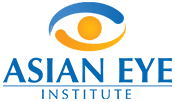Pediatric Ophthalmology, Orthoptics & Strabismus
Like adults,infants and children can suffer from eye diseases. They rarely complain about eye problems because they have no alternative experience to compare it with. They assume that whatever vision they have is normal. However, having poor vision can impede their learning and development, and affect the way they interact with other children.
The common eye problems that affect children include:
- Refractive errors – this refers to blurring of vision due to nearsightedness, farsightedness, or astigmatism.
- Strabismus – this refers to misaligned eyes that may be permanent or intermittent. If left untreated, it can lead to problems with depth perception and amblyopia.
- Ambylopia – also called lazy eye, amblyopia is decreased vision in one or both eyes that is caused by abnormal development of vision. If left untreated, the brain only learns to see blurry images with the eye with amblyopia.
However, infants and children may also develop serious eye conditions:
- Cataract – clouding of the normally clear lens of the eye, causing blurry vision. If left untreated, it can lead to blindness.
- Retinoblastoma – a rare form of eye cancer, retinoblastoma usually occurs in children younger than 5 years old and may be in one eye or both eyes.
- Retinopathy of prematurity – a potentially blinding eye disease that usually affects premature babies. It is the development of abnormal blood vessels in the retina of the eye. These vessels are fragile, causing it to leak. Eventually, it will pull the retina from the inner surface of the retina, leading to retinal detachment.
Most eye problems have no early warning signs. As parents, it is important to be observant of your children and see if they:
- Sit near the TV screen or hold a book too close when reading
- Frequently rub their eyes
- Close one eye when reading
- Squint or tilt their head to see better
- Suffer from headaches
- Avoid activities that require near vision like reading or doing homework, or distance vision like playing sports
- Experience extreme sensitivity to light
- Experience excessive tearing
It is best to have children’s eyes screened as soon as they are born. Formal vision test can begin as early as 3 years old or before going to school. Those who were born prematurely, have developmental delays or are cross-eyed should undergo checkup, depending on the recommendation of their pediatric eye doctor. Eye screenings or exams are important to detect and treat eye problems early. Children are more responsive to treatment when diagnosed early.







